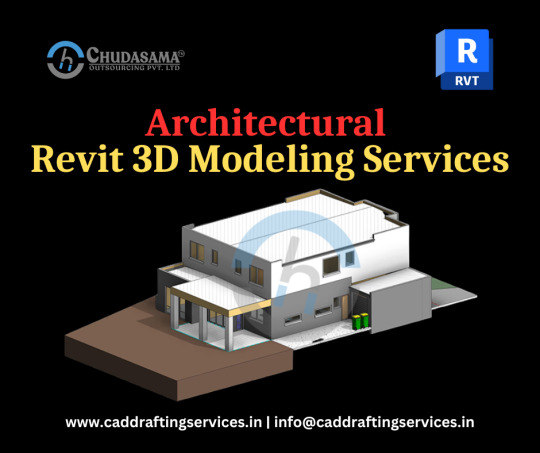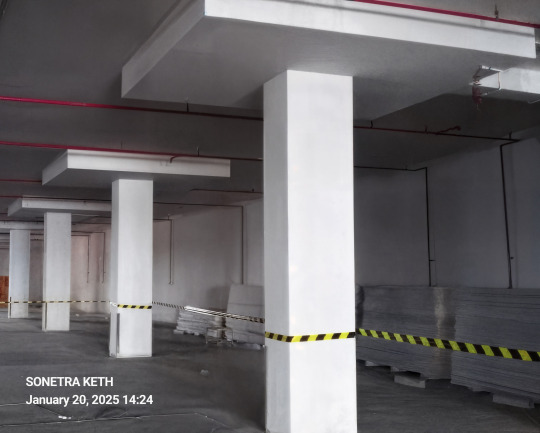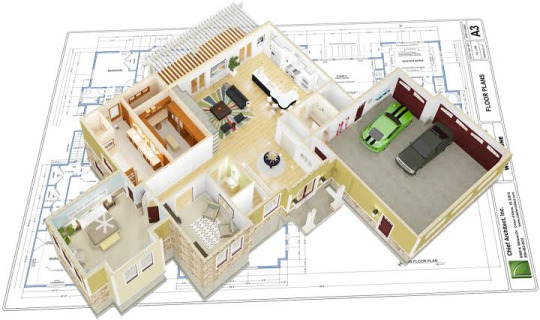#revit architectural modeling
Explore tagged Tumblr posts
Text
Best Architectural Revit Modeling Services

We provide the best Revit modeling services. We take great pride in being able to produce outstanding quality architectural Revit modeling services for our clients overseas. Our clients are located in USA, UK, Canada, New Zealand, UAE etc. We provide custom solutions to each of our clients that make our work more preferable. Chudasma Outsourcing offers all types of architectural services. Contact us at [email protected] if you want to outsource any architectural services.
For more details. https://bit.ly/3LWc3uw
#revit modeling services#3d revit modeling services#architectural revit modeling#architectural revit modeling services#3d architectural revit modeling#outsource revit modeling services#outsource 3d revit modeling#revit bim modeling services#revit bim services#revit 3d bim services#revit architectural modeling#outsourcing revit bim services#building information modeling#best revit modeling services#chudasama outsourcing#copl
1 note
·
View note
Text
Transforming Architectural BIM Trends to Watch in 2025

Architectural BIM services are on rise with growing technology. Integrating latest trends will result in enhanced project outcomes, curve of creativity and advanced workflow. Checkout the latest trends of architectural BIM in detail.
#architectural bim services#bim architectural services#revit architectural services#architectural bim modeling#bim consulting company#architectural bim consulting services#bim architectural modeling services#bim architectural services provider
2 notes
·
View notes
Text

openBIM® by Sonetra KETH
openBIM® is a collaborative approach and an ecosystem of open standards, protocols, and workflows that enable interoperability across different BIM software platforms, stakeholders, and disciplines in the Architecture, Engineering, and Construction (AEC) industry.
openBIM® represents an industry-wide movement towards interoperability and open standards that facilitate collaborative, data-rich BIM workflows across diverse software platforms and stakeholders, ultimately fostering a more integrated, flexible, and sustainable built environment ecosystem.
Core Principles of openBIM®
Interoperability: Seamless exchange of BIM data without proprietary restrictions.
Open Standards: Relying on internationally recognized, non-proprietary standards to facilitate data consistency and collaboration.
Open Data Exchange: Promoting a data-centric approach where model information can be shared, interpreted, and used across various tools.
Collaborative Ecosystem: Enabling multiple stakeholders using different applications to work collectively on a project.
Key Components of openBIM®
Standards and Protocols
Industry Foundation Classes (IFC): The core openBIM schema developed by buildingSMART® for rich, schema-based exchange of geometric and semantic data.
bSDD (buildingSMART Data Dictionary): A comprehensive repository of standardized data definitions to ensure semantic consistency.
CityGML, IFC-SPF: Additional standards for GIS, infrastructure, and other data formats.
IFC, BCF (BIM Collaboration Format): For model data exchange and issue tracking.
Tools and Software
Various BIM applications supporting openBIM standards, enabling import/export, viewing, validation, and collaboration while maintaining data integrity.
The interoperability is made possible through software certifications and compatibility testing, often coordinated by buildingSMART®.
Workflow & Data Management
Emphasizes a model-centric approach, where the central repository is an IFC model that can be accessed, modified, and referenced by multiple applications.
Promotes open data exchange rather than proprietary formats, reducing vendor lock-in and fostering innovation.
Advantages of openBIM®
Vendor Neutrality: No single vendor controls the data exchange standards.
Flexibility & Compatibility: Enables collaboration across various platforms (Revit, ArchiCAD, Vectorworks, Tekla, etc.).
Long-term Data Sustainability: Ensures that project data remains usable and understandable over time.
Enhanced Collaboration: Stakeholders can work concurrently, review, issue comments, and coordinate effectively.
RMIT University Vietnam (2015)
youtube
buildingSMART International Technical Director Léon van Berlo who discusses the openBIM workflow
Sonetra KETH (កេត សុនេត្រា) •Architectural Manager, Project Manager, BIM Director •建築師經理, 專案經理, BIM總監 •Giám đốc kiến trúc, Giám đốc dựán, Giám đốc BIM •RMIT University Vietnam + Institute of Technology of Cambodia
#Sonetra Keth#Architectural Manager#Architectural Design Manager#BIM Director#BIM Manager#BIM Coordinator#Project Manager#RMIT University Vietnam#Real Estate Development#Construction Industry#Building Information Modelling#BIM#AI#Artificial Intelligence#6th Annual BIM Summit#Technology#VDC#Virtual Design#IoT#Khmer BIM#Machine Learning#C4R#Collaboration for Revit#NETRA#netra#នេត្រា#កេត សុនេត្រា#crossorigin=“anonymous”></script>#<meta name=“google-adsense-account” content=“ca-pub-9430617320114361”>#<script async src=“https://pagead2.googlesyndication.com/pagead/js/adsbygoogle.js?client=ca-pub-9430617320114361”
1 note
·
View note
Text

Typical Detail: RC Slab Drop Panel 典型细节: 钢筋混凝土板 Drop Panel by Sonetra KETH

DROP PANELS are reinforced concrete extensions around the top of shear walls, columns, or heavily loaded areas. They are critical elements in seismic and load-resistant structural design. Slab drop panels are thickened areas around columns in flat slab construction, increasing shear strength and enabling the slab to support greater loads. This feature is typical of flat slab systems, which are two-way reinforced structures.
Drop Panels are needed because:
Shear and Moment Resistance: They enhance the capacity of vertical structural elements (shear walls or columns) to resist bending moments and shear forces, especially at the critical junctions (e.g., wall-column interfaces).
Reduce Stress Concentrations: Drop panels distribute concentrated shear and axial loads more evenly into the foundation or diaphragm, preventing stress concentrations and potential structural failure.
Increase Structural Rigidity and Stability: They improve the overall stiffness and robustness where high load or seismic forces are expected, especially in high-rise or seismic zones.

Typical Detail: Column-Slab Section Views
典型细节: 钢筋混凝土柱和板 剖面图 by Sonetra KETH
Much engineering judgment is required to reach a sound conclusion on the allowable movements that can be safely tolerated in a tall building. Several factors need to be taken into account. These are:
Type of framing employed for the building
Magnitude of total as well as differential movement
The rate at which the predicted movement takes place
Type of movement, whether the deformation of the soil causes tilting or vertical displacement of the building
Every city has its own particular characteristics regarding the design and construction of foundations for tall buildings, which are characterized by the local geology and groundwater conditions. Their choice for a specific project is primarily influenced by economic and soil conditions, and even under identical conditions, it can vary in different geographical locations.
Sonetra KETH (កេត សុនេត្រា) Architectural Manager/Project Manager/BIM Director RMIT University Vietnam + Institute of Technology of Cambodia
#Sonetra Keth#Architectural Manager#Architectural Design Manager#BIM Director#BIM Manager#BIM Coordinator#Project Manager#RMIT University Vietnam#Real Estate Development#Construction Industry#Building Information Modelling#BIM#AI#Artificial Intelligence#6th Annual BIM Summit#Technology#VDC#Virtual Design#IoT#Khmer BIM#C4R#Collaboration for Revit#NETRA#netra#នេត្រា#កេត សុនេត្រា#crossorigin=“anonymous”></script>#<meta name=“google-adsense-account” content=“ca-pub-9430617320114361”>#<script async src=“https://pagead2.googlesyndication.com/pagead/js/adsbygoogle.js?client=ca-pub-9430617320114361”#https://amzn.to/3Z4qc10
0 notes
Text
1 note
·
View note
Text
Revit Family Creation for Seamless BIM Coordination – Enhance BIM Coordination with high-quality Revit families for MEP, structural, and architectural projects. Improve accuracy, efficiency, and collaboration in BIM services.
#Revit Family Creation#BIM Coordination#MEP BIM Coordination#BIM Clash Detection#Revit families#3D modeling#architectural BIM#structural BIM
0 notes
Text
How Drafting Services Cater to Budget and Space Constraints
Drafting services are an invaluable resource for homeowners navigating budget and space constraints. By combining creativity, technical expertise, and a client-focused approach, they ensure that your project is both cost-effective and functional.
#drafting services#professional drafting solutions#architectural drafting#residential drafting plans#commercial drafting services#autocad drafting#revit drafting experts#structural drafting plans#custom home drafting#floor plan drafting#cad drafting services#3d modeling and drafting#detailed construction drawings#remodeling drafting plans#drafting and design services
0 notes
Text
Best Architectural 3D Revit Modeling Services at Affordable Price

Chudasama Outsourcing is a leading Architectural BIM company that provides high standards of services and quality. We provide high-quality 3D Revit Modeling Services at an affordable price. We take great pride in being able to produce excellent quality Revit modeling services to our clients overseas. Our clients are located in the USA, UK, Canada, New Zealand, Australia, and UAE, etc. We provide services like Architectural, Structural, MEPF, Shop Drawings, and as-built Drawings in Revit. If you want to outsource any such services, then contact us at [email protected]
#revit modeling services#3d revit modeling services#architectural revit modeling#architectural revit modeling services#3d architectural revit modeling#outsource revit modeling services#bim modeling services#architectural#revit#building information modeling
3 notes
·
View notes
Text
BIM Execution Plan Guide for Robust Strategies

BIM is a go to tool and requires accurate implementation in the construction project. With the help of a BIM execution plan, AEC professionals can strategize the process and get accurate outcomes. Here’s a detailed guide for robust strategies for BEP.
#BIM Modeling Services#3D BIM Modeling#Revit BIM Services#BIM Project Management#BIM Consulting Firm#Outsource BIM Services#3D Revit Modeling#3D Modeling Services#Architectural BIM Services#BIM Services in India#BIM Company India
2 notes
·
View notes
Text

Typical Detail: RC Slab Drop Panel 典型细节: 钢筋混凝土板 Drop Panel by Sonetra KETH

Drop panels are reinforced concrete extensions around the top of shear walls, columns, or heavily loaded areas. They are critical elements in seismic and load-resistant structural design. Slab drop panels are thickened areas around columns in flat slab construction, increasing shear strength and enabling the slab to support greater loads. This feature is typical of flat slab systems, which are two-way reinforced structures.
Drop Panels are needed because:
Shear and Moment Resistance: They enhance the capacity of vertical structural elements (shear walls or columns) to resist bending moments and shear forces, especially at the critical junctions (e.g., wall-column interfaces).
Reduce Stress Concentrations: Drop panels distribute concentrated shear and axial loads more evenly into the foundation or diaphragm, preventing stress concentrations and potential structural failure.
Increase Structural Rigidity and Stability: They improve the overall stiffness and robustness where high load or seismic forces are expected, especially in high-rise or seismic zones.

Typical Detail: Column-Slab Section Views 典型细节: 钢筋混凝土柱和板 剖面图 by Sonetra KETH
Much engineering judgment is required to reach a sound conclusion on the allowable movements that can be safely tolerated in a tall building. Several factors need to be taken into account. These are:
Type of framing employed for the building
Magnitude of total as well as differential movement
The rate at which the predicted movement takes place
Type of movement, whether the deformation of the soil causes tilting or vertical displacement of the building
Every city has its own particular characteristics regarding the design and construction of foundations for tall buildings, which are characterized by the local geology and groundwater conditions. Their choice for a particular project is primarily influenced by economic and soil conditions, and even under identical conditions, it can vary in different geographical locations. In this section, a brief description of two types, namely, the pile and mat foundations, is given, highlighting their practical aspects.
Sonetra KETH (កេត សុនេត្រា) •Architectural Manager, Project Manager, BIM Director •建築師經理, 專案經理, BIM總監 •Giám đốc kiến trúc, Giám đốc dựán, Giám đốc BIM •RMIT University Vietnam + Institute of Technology of Cambodia
#Sonetra Keth#Architectural Manager#Architectural Design Manager#BIM Director#BIM Manager#BIM Coordinator#Project Manager#RMIT University Vietnam#Real Estate Development#Construction Industry#Building Information Modelling#BIM#AI#Artificial Intelligence#6th Annual BIM Summit#Technology#VDC#Virtual Design#IoT#Khmer BIM#Machine Learning#C4R#Collaboration for Revit#NETRA#netra#នេត្រា#កេត សុនេត្រា#crossorigin=“anonymous”></script>#<meta name=“google-adsense-account” content=“ca-pub-9430617320114361”>#<script async src=“https://pagead2.googlesyndication.com/pagead/js/adsbygoogle.js?client=ca-pub-9430617320114361”
1 note
·
View note
Text
Why Manufacturers Need CAD Drafting for Efficient Product Design

In today's highly competitive manufacturing industry, efficiency and precision are key factors determining product development's success. As manufacturers strive to deliver innovative and cost-effective solutions, the importance of CAD (Computer-Aided Design) drafting in achieving efficient product design cannot be overstated. CAD drafting offers a digital approach to creating, modifying, and optimizing product designs, making it an indispensable tool for manufacturers worldwide.
This blog explores why CAD drafting is essential for manufacturers aiming to streamline their design processes, improve accuracy, and enhance collaboration.
1. Streamlining the Product Design Process
CAD drafting automates many aspects of the product design process, allowing manufacturers to create detailed, accurate designs faster than traditional drafting methods.
Key Benefits:
Quick Prototyping: CAD tools enable the rapid creation of design prototypes, reducing the time required to move from concept to final design.
Reuse of Templates: Manufacturers can save and reuse CAD templates for recurring designs, ensuring consistency and saving time.
Design Iterations: CAD software facilitates multiple design iterations with minimal effort, enabling manufacturers to explore different options before finalizing the best one.
Efficient design workflows powered by CAD drafting result in reduced production timelines and faster time-to-market for products.
2. Improved Accuracy and Reduced Errors
Manual drafting methods are prone to errors that can lead to costly revisions and delays. CAD drafting eliminates many of these risks by offering tools for precise measurements and error detection.
How CAD Drafting Enhances Accuracy:
Error Detection Tools: Advanced CAD software can identify design inconsistencies, ensuring products meet specifications.
Realistic 3D Modeling: CAD drafting allows designers to visualize and analyze products in 3D, catching potential flaws before production begins.
Seamless Adjustments: Measurements and dimensions can be adjusted automatically, reducing human error in calculations.
By minimizing errors early in the design process, manufacturers save both time and money.
3. Enhanced Collaboration Among Teams
Product design often involves collaboration among engineers, designers, and project managers. CAD drafting facilitates seamless communication by creating a common platform where all stakeholders can review and edit designs in real time.
Collaboration Features in CAD Drafting:
Cloud-Based Access: Many CAD platforms offer cloud integration, allowing team members to access designs from anywhere.
Version Control: CAD software tracks design changes, ensuring that everyone works on the latest version.
Integrated Feedback Tools: Stakeholders can leave comments directly on the design files, simplifying the feedback process.
Effective collaboration through CAD drafting enhances teamwork and reduces the risk of miscommunication.
4. Cost-Efficiency in Product Development
Cost control is a critical aspect of manufacturing. CAD drafting helps manufacturers optimize their budgets by reducing material waste and preventing costly design errors.
Ways CAD Drafting Saves Costs:
Material Optimization: CAD tools allow for precise calculations of material requirements, minimizing waste during production.
Simulation and Testing: Designs can be simulated in virtual environments to test performance, reducing the need for physical prototypes.
Reduced Revisions: Accurate CAD drafting minimizes the need for expensive rework and redesigns.
These cost-saving benefits make CAD drafting an invaluable investment for manufacturers looking to maximize their ROI.
5. Facilitating Compliance with Industry Standards
Manufacturers must adhere to strict industry standards and regulations when designing products. CAD drafting simplifies this process by incorporating compliance features directly into the software.
Compliance Made Easy:
Standardized Libraries: CAD platforms often include pre-built libraries of industry-standard components and templates.
Automated Documentation: Detailed design documentation generated by CAD software ensures compliance with regulatory requirements.
Design Validation: CAD drafting tools can validate designs against specific standards, identifying potential non-compliance issues early.
This ensures that manufacturers can produce high-quality products that meet industry requirements without additional hassle.
6. Flexibility in Design Customization
Customization is a growing trend in manufacturing, as consumers demand products tailored to their specific needs. CAD drafting empowers manufacturers to create customized designs efficiently.
Custom Design Advantages:
Parametric Modeling: CAD software allows designers to adjust parameters, making it easy to customize product dimensions and features.
Personalized Prototypes: Customized prototypes can be created quickly to meet unique client requirements.
Scalability: Designs can be scaled up or down to fit different product specifications without starting from scratch.
This flexibility enables manufacturers to cater to diverse markets and enhance customer satisfaction.
7. Improved Visualization with 3D Models
Unlike traditional 2D drafting, CAD drafting offers advanced visualization through 3D modeling. This feature is particularly beneficial for manufacturers looking to create complex or intricate product designs.
Visualization Benefits:
Realistic Renderings: High-quality 3D renderings give stakeholders a clear idea of what the final product will look like.
Enhanced Presentations: Manufacturers can use 3D models in presentations and marketing materials to attract clients and investors.
Virtual Prototyping: 3D models can be used to test assembly processes and product functionality before production.
Enhanced visualization improves decision-making and reduces uncertainty in the design process.
8. Seamless Integration with Manufacturing Technologies
Modern manufacturing relies heavily on technologies like CNC machining and 3D printing, both of which require precise CAD files for operation.
CAD Drafting Integration Benefits:
CNC Compatibility: CAD designs can be directly converted into machine-readable formats for CNC machines.
3D Printing: CAD drafting enables the creation of detailed 3D models optimized for additive manufacturing.
Digital Twin Creation: CAD tools can create digital twins of products, enabling manufacturers to monitor and improve performance in real-time.
By integrating seamlessly with these technologies, CAD drafting bridges the gap between design and production.
9. Scalability for Future Projects
As manufacturers grow, their design needs evolve. CAD drafting offers scalability, allowing companies to handle increasing design complexity without compromising efficiency.
How CAD Drafting Supports Growth:
Advanced Features: CAD software evolves with updates, offering new features to meet changing industry demands.
Data Management: Large-scale projects can be managed effectively with robust data organization tools in CAD platforms.
Cross-Industry Applications: CAD drafting can be adapted for use in various industries, from automotive to aerospace, ensuring long-term relevance.
This scalability ensures that manufacturers are always prepared to meet future challenges.
Conclusion
CAD drafting has become an essential tool for manufacturers aiming to achieve efficient product design. By streamlining workflows, improving accuracy, and facilitating collaboration, CAD drafting enables manufacturers to stay competitive in a rapidly evolving market. Its ability to reduce costs, enhance customization, and integrate with modern manufacturing technologies makes it a must-have for any organization looking to optimize its product development process.
If you’re a manufacturer seeking to take your product design capabilities to the next level, adopting CAD drafting is a step in the right direction. Invest in this transformative technology today to unlock new levels of efficiency and innovation.
Boost Your Manufacturing Efficiency with CAD Drafting Services!At ProtoTech Solutions, we specialize in providing CAD drafting services tailored to meet the unique needs of manufacturers. Contact us today to learn how our experts can help streamline your product design process!
#cad drafting services#outsource cad drafting services#cad design services#outsource drafting services#cad outsourcing#cad services#cad outsourcing services#cad design and drafting services#cad drawing services#drafting services in india#cad service provider#outsourced cad services#drafting service in india#outsource autocad drafting#cad drafting outsourcing services#cad services india#outsource cad services#outsource cad services to india#autodesk outsourcing#architectural cad drafting services#3d cad drafting services#cad drafting outsource#outsource cad drafting#cad drafting service#revit drafting services#autocad drafting outsourcing#cad modeling outsourcing#cad services provider#autocad design outsourcing#outsource cad design
0 notes
Text
#architecture#arquiteturadesign#architettura#architectdesign#residential architects#drafts#autocad#revit#revit 3d modeling#revit modeling services#freelancer
0 notes
Text
Revit BIM Modeling Services
In the world of Building Information Modeling (BIM), efficiency, precision, and flexibility are key to delivering successful projects. Revit Families—predefined, parametric components in Autodesk Revit—are essential for creating accurate and data-rich models. Our Revit Family Creation service offers tailored solutions to enhance your BIM workflow, ensuring that every element in your model is precisely designed to meet your project's needs.
Visit us online : https://www.arcvisionstudio.com/revit-family-creation.html
#Revit BIM Modeling Services#Architectural 3D Services#BIM 3D Modeling Services#CAD to BIM Service#Architectural CD Set Services#PDF to BIM Conversion
0 notes
Text
Revit Family Creation for Seamless BIM Coordination Services

If you are in construction or engineering, you know how important it is to keep projects running smoothly. Revit Family Creation helps make that happen by improving BIM Coordination. Whether you are working on MEP, structural, or architectural elements, having well-made Revit families makes everything more accurate, efficient, and easy to collaborate on. Let's break down why Revit Family Creation is such a big deal in BIM Coordination and how it helps.
What is Revit Family Creation?
Think of Revit Family Creation as building a digital toolbox. It involves creating reusable, parametric 3D components like walls, doors, pipes, and MEP elements that can be used across different BIM projects. Having high-quality Revit families makes sure everything stays consistent, reduces manual work, and keeps the process error-free.
Why Revit Family Creation Matters
Saves Time: Instead of creating elements from scratch, designers can use pre-made Revit families, speeding up the process.
Better Collaboration: Standardized elements make it easier for everyone like architects, engineers, and contractors to stay on the same page.
Fewer Mistakes: Well-structured Revit families help prevent design clashes and reduce the need for rework.
Flexibility: Parametric design means you can easily tweak elements to fit project needs.
Seamless BIM Integration: Works smoothly with BIM Coordination Services, improving the accuracy and efficiency of 3D models.
How Revit Family Creation Helps BIM Coordination
1. Avoiding Design Clashes
BIM projects involve many moving parts such as MEP, structural, and architectural elements all need to fit together perfectly. Accurate Revit families help detect and fix clashes early, cutting down on costly revisions.
2. Better MEP Coordination
For MEP projects, Revit families ensure HVAC, electrical, and plumbing systems are well-aligned. This makes installation smoother and prevents conflicts during construction.
3. Easy Adjustments with Parametric Design
Unlike static 3D objects, Revit families allow users to modify dimensions and properties as needed. This is a huge advantage for large-scale projects where adjustments are common.
4. Stronger Visualizations
High-quality Revit families improve 3D models, making it easier for stakeholders to see the finished project before construction even begins. This leads to better planning and decision-making.
5. Optimized Space Planning
Well-designed Revit families help maximize available space, whether it's for structural components, MEP layouts, or architectural elements. The result? Less waste and more efficient designs.
6. Consistency Across Projects
When working on multiple projects, standardized Revit families keep everything uniform. This is especially helpful for large firms managing several projects at once.
7. Faster Approvals
When presenting designs to clients or authorities, high-quality Revit families make models clearer and more realistic, speeding up approval processes.
Best Practices for Revit Family Creation
To get the most out of Revit Family Creation, follow these best practices:
Use Clear Naming Conventions: Helps team members quickly find and use the right components.
Keep File Sizes Optimized: Large Revit families can slow down models, so keeping them lightweight improves performance.
Use Shared Parameters: This makes Revit families more flexible and easier to use across different projects.
Test Before Use: Always check that Revit families function properly before applying them to a live project.
Ensure Parametric Accuracy: Properly defined parameters allow flexibility without compromising functionality.
Include Manufacturer Data: Using real product specifications makes procurement and installation easier.
Finding the Right BIM Partner
If you want top-notch BIM Coordination Services, it helps to work with an experienced provider. SmartCADD specializes in Revit Family Creation, BIM Clash Detection, and MEP BIM Coordination, making sure your projects run efficiently and accurately.
Why Choose SmartCADD?
Deep BIM Expertise: We have years of experience in delivering customized BIM solutions.
Comprehensive Support: From Revit Family Creation to full BIM Coordination, we cover it all.
Client-Focused Approach: Accuracy and teamwork are at the heart of everything we do.
Reliable Customer Support: Need help? Contact us for efficient and accurate services for your projects.
Proven Success: Our track record speaks for itself, with satisfied clients and successful projects.
Latest BIM Technologies: We use cutting-edge BIM software to ensure high-quality results.
The Future of Revit Family Creation and BIM Coordination
Technology keeps evolving, and so does BIM Coordination. Here are some trends to watch:
AI and Machine Learning: These will help automate tasks and reduce human errors.
More Automation in Revit Family Creation: Expect smarter tools to handle repetitive tasks, letting designers focus on complex planning.
Integration with Digital Twins: Real-time monitoring and predictive maintenance will become easier.
Cloud-Based Collaboration: Teams will be able to work together seamlessly from anywhere in the world.
Final Thoughts
Revit Family Creation plays a big role in BIM Coordination Services, helping projects run more smoothly by improving efficiency, reducing errors, and enhancing 3D models. Whether you're handling MEP BIM Coordination, BIM Clash Detection, or other BIM Services, having well-structured Revit families is key to success.
Want to make sure your projects meet industry standards? Partner with SmartCADD, a trusted leader in BIM solutions.
#Revit Family Creation#BIM Coordination#MEP BIM Coordination#BIM Clash Detection#Revit families#3D modeling#building information modeling#Revit#architectural BIM#structural BIM
0 notes
Text
Levantamiento en Nube de Puntos
Ex Gobernación Marítima Antofagasta, Chile
#arquitectura#arquitectos#architecture#architect#pointcloudtobimservices#point cloud to bim#bim modeling services#revit
0 notes
Text
Top 5 Home Design and Construction Software
The home design and construction industry has evolved significantly with the advent of technology, leading to the development of sophisticated software tools that enhance design processes, improve collaboration, and streamline project management. Here, we explore the top five home design and construction software options available today, highlighting their features, benefits, and suitability for…

View On WordPress
#3D modeling software#Archicad review#architectural design tools#architectural visualization software#AutoCAD for architects#best home design software#BIM software#CAD software#Chief Architect features#collaborative design tools#construction project management tools#construction software#home design applications#home design software#interior design software#residential design software#Revit alternatives#SketchUp benefits
0 notes